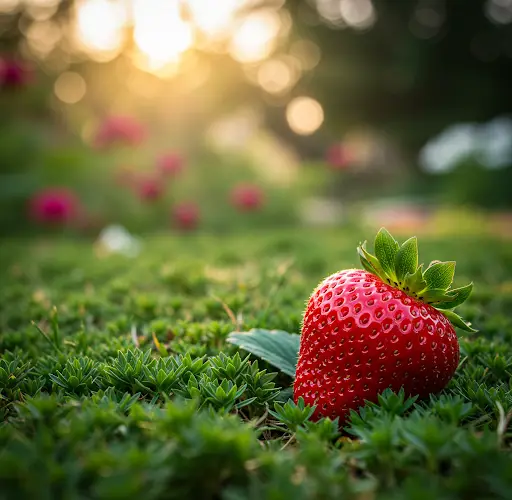Spring Strawberry Fertilization for a Bountiful Harvest
With the arrival of spring, strawberries require proper nutrition to recover from winter and prepare for a season of abundant fruiting. As soon as the snow melts and the outdoor temperature reaches approximately 10 degrees Celsius, it’s the perfect time to apply the first round of fertilization. The earlier the plants receive essential nutrients, the greater, sweeter, and tastier the harvest will be.
If the strawberry plants were newly planted last year, they generally do not require heavy fertilization. A light organic feeding, such as a diluted manure solution, is sufficient to support their growth. However, for older plants that have been producing for multiple seasons, additional feeding is necessary to replenish lost nutrients and ensure a productive yield.
The Benefits of Spring Fertilization
Strawberries that have been growing for several years tend to deplete the soil’s nutrients, making spring fertilization crucial. A well-balanced, natural fertilizer helps the plants recover and prepares them for abundant flowering and fruiting. One of the most effective organic fertilizers for strawberries in spring is wood ash.
Wood ash contains a rich composition of essential macro and micronutrients, including potassium, calcium, and phosphorus. These elements contribute to strong root development, improved flowering, and enhanced fruit production. Additionally, wood ash is easily absorbed by the plants, making it an efficient and readily available nutrient source.
How to Apply Wood Ash Fertilization
To maximize the benefits of this natural fertilizer, apply wood ash directly to the strawberry beds as follows:
- Evenly sprinkle wood ash between the rows of strawberry plants.
- Use approximately 500 grams (half a kilogram) of wood ash per square meter.
- After spreading the ash, thoroughly water the area to help the nutrients penetrate the soil and become available to the plants.
Additional Care Tips
While fertilization is essential, proper strawberry care also involves regular maintenance. Consider these additional steps to ensure optimal plant health and productivity:
- Mulching: Applying a layer of mulch around the plants helps retain moisture and suppress weeds.
- Weeding: Remove any unwanted weeds to prevent competition for nutrients and space.
- Pruning: Trim old, damaged, or excess leaves to promote better air circulation and reduce disease risk.
- Irrigation: Maintain consistent watering, especially during dry spells, to support healthy fruit development.
Conclusion
By following these simple yet effective fertilization and care techniques, strawberry plants will thrive and produce a generous, flavorful harvest. Implementing a spring feeding routine with wood ash ensures that the soil remains nutrient-rich, resulting in healthy growth and bountiful fruiting throughout the season. With proper care, strawberries will reward gardeners with an abundance of delicious, homegrown berries year after year.



